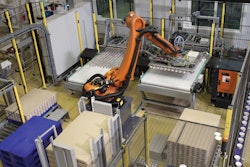
Marketers have always used line extensions to build business and grow consumer loyalty. Oreo is a classic example. You start with Oreo sandwich cookies and then extend in subtle ways. You add more filling (“Double Stuf”) and make the cookies bigger or smaller. Then you vary the base product a bit further by, say, covering the cookies with chocolate or changing their flavors and filling. This classic approach to line extensions worked decades ago and still works today.
But today there are reasons for brands to stretch further—to go beyond the simple and obvious. Today’s buzz-hungry, relevancy-oriented, social media-rich marketplace is fertile ground for brands to connect with consumers by innovating even more. By leveraging existing brand equities and stretching them into new and different areas, companies can build brand awareness, enhance brand credentials, drive incremental usage among loyalists, and even attract new users to the fold. Successful “stretching” leverages key packaging equities as a bridge to maintain a strong connection between the existing brand and the new innovation.
Brand stretches that make sense
A prime example of a brand stretch is Ben & Jerry’s Salted Caramel Brownie Brown Ale, a collaboration with New Belgium Brewing Co. that will be available this fall. Here, the packaging for the brown ale clearly leverages the brand’s visual assets: the puffy white clouds against a light blue sky and the quirky cow with its bright-yellow scarf, snow goggles, and ski hat. But this packaging isn’t designed only for those of us who have stood before grocery-store coolers salivating at all the different Ben & Jerry’s flavors; it also aims to appeal to craft beer fans who have done much the same looking at diverse selections of ales, stouts, and the like. In addition to the Ben & Jerry’s equities, the packaging includes New Belgium’s logo and signature red bicycle.
I doubt this is a first step in a move by Ben & Jerry’s to become a dominant player in the world of craft beer. Nor is New Belgium likely to sell ice cream-inspired beer anytime soon. Instead, this is a quirky, fun, and buzz-generating collaboration that will put smiles on the faces of all involved. This brand stretch reinforces the good feelings already associated with both brands. If it makes money, that’s a happy bonus.
Another example is Patagonia Provisions by outdoor clothier Patagonia. The company’s world-traveling founder, Yvon Chouinard, cares deeply about food and began offering Patagonia-branded food items in 2013 with the introduction of lightly smoked, wild-caught salmon. More recently, the company began selling organic fruit-and-almond bars. Here, the effort clearly involved a careful survey of existing approaches to packaging in the healthy bar category. Patagonia’s fruit bars are visually spare, with about as much white space as you would expect to see on a trek through the Himalayas. This sends a message to consumers that the bars are about whole foods, not additives. The Patagonia logo is tastefully minimized but helps tie these products back to the original brand. The overall approach is utilitarian, making the bars feel like something you would pick up along with freeze-dried dinners and fuel for your camp stove, in preparation for a long backpacking trip. Are hardcore adventurers really the sole target audience for the bars? No, but who doesn’t want to feel like a hardcore adventurer at one time or another? Regardless of whether Patagonia Provisions becomes a big moneymaker, this stretch clearly helps bolster the overall Patagonia brand. In this case, the fit between the original product brand and the new offshoot is as snug as a pair of ski pants.


























